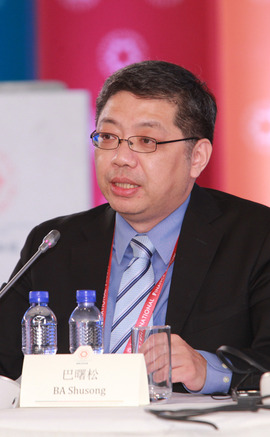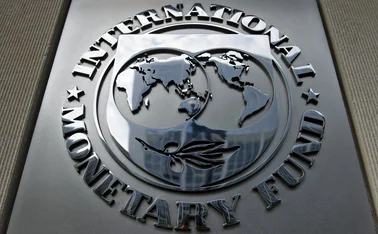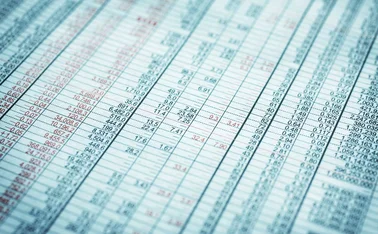
Reform facilitated by the renminbi’s inclusion in the SDR basket
The renminbi's addition to the SDR is a significant moment

The initial draft of the Thirteenth Five-Year Plan offered some advice on the development of the financial sector. For instance, China needs to integrate and consolidate its regulatory frameworks, realise convertibility of renminbi capital accounts, and promote the free and wide use of the renminbi. It also sought to ensure the renminbi joined the International Monetary Fund's Special Drawing Rights (SDR) basket.
Background of SDR creation
The SDR was created in 1969 as a supplementary international reserve asset, as official reserves in the post-Second World War Bretton Woods system – gold and the US dollar – were inadequate. The SDR is not a currency but rather a basket of currencies, and its quota allocation is reviewed and adjusted every five years under the IMF framework. Later, as major currencies shifted to floating exchange rate regimes, the SDR became less important since various countries and markets had easy access to financing. From then on, the SDR received much less attention, largely only being mentioned in finance textbooks until the global financial crisis occurred in 2008. In 2009, the SDR was reconsidered an important tool that could help to maintain global financial stability at a time when the international community sought international financial stability frameworks.
Impact of the renminbi's inclusion
When the renminbi was being reviewed to join the SDR (it was confirmed in 2015 and will officially comprise part of the SDR later this year), two aspects required particular attention: First, the issuing country (or region) of the currency must play a major role in global economic and trading activities – something China been doing for a long time. Second, the currency must be measured as a "freely usable currency" – a term that can be interpreted in a somewhat subjective manner.
For China, the inclusion of the renminbi in the SDR was an important recognition of a series of efforts made by the Chinese government in promoting renminbi internationalisation, in accordance with market demand. The inclusion itself is actually less important than the series of Chinese economic and financial system reforms resulting from the efforts made by the Chinese government to facilitate the renminbi's membership of the basket, which have positive implications.
The authorities in China have carried out a series of financial reform measures - not just aimed at meeting the IMF's ‘freely usable' criterion - but also to open the economy. This has resulted in a more market-based exchange rate mechanism, interest rate liberalisation, the opening the domestic bond markets to foreign buyers including foreign central banks, the launch of an international payments and clearing system, and the adoption of IMF's Special Data Dissemination Standards to improve transparency. Therefore, the vote to include the renminbi in the SDR basket last November was, effectively, recognition of China's financial reforms.
Meanwhile, from the perspective of global investors and the markets, major institutional investors still hold a relatively small amount of renminbi-denominated assets. The fact the renminbi is joining the SDR basket may prove to be an important factor considered by investment funds' committees when deciding to increase the amount of renminbi-denominated assets in their portfolios, encouraging them to invest more. With more assets denominated in renminbi, overseas financing costs should be lowered for Chinese enterprises, financial institutions and government bodies. This should reap incremental benefits over the longer term.
During the period from 1969 to 2009, the SDR became less important for the IMF; and even since 2009 when its importance was reconsidered, the SDR has been only used in official settlements and very rarely by the private sector. In addition, the previous SDR currencies' issuing countries (the US, the UK, Japan and the eurozone) all have shrinking percentages of the world's GDP. Therefore, the inclusion of the renminbi into the SDR basket will significantly boost the percentage of world GDP that the SDR basket represents. This should also help to enhance the attractiveness of the SDR in international financial markets and extend its use from official settlements to the private sector.
Boosting reform and development
 Ba Shusong
Ba Shusong
Currently, the weight of the RMB in the SDR basket is 10.92%, which will probably increase to 19-20% by 2020 if China maintains an annual growth rate of 6.5% and continues its economic restructuring. This means the renminbi is likely to become the third major currency after the US dollar and euro, with a much larger weight than that of the Japanese yen and British pound. However, the currency is still in an initial stage in terms of its weight in the international financial markets and in achieving major reserve currency status. The gap between the renminbi's weight in the SDR basket and its weight in international financial markets needs to be narrowed down by taking further supporting measures that facilitate financial and economic reforms. This will be another example of how China "draws on further opening up to boost reform and development" – a characteristic repeated since its reform and opening up 30 years ago.
Achieving reserve currency status requires a very long and complicated process, as one can see from the evolution of the world's major reserve currencies such as the British pound, yen, euro and the US dollar. The factors that facilitate such evolution include rising economic aggregates, financial markets development and adjustment of the global political and economic landscape. With the renminbi joining the SDR, more focus should be placed on how to accelerate economic and financial reform and the two-way opening-up of financial markets, so the renminbi will achieve similar weights in both the international monetary system and financial markets as its weight in the SDR basket as the world's third major currency. As China proceeds with its reform efforts, it should actively develop financial markets, promote a positive interaction between onshore and offshore financial systems and develop financial products and investment instruments - for instance, supporting the international usage of renminbi in global infrastructure development.
Through strenuous efforts in the lead-up to 2016, more than 40 central banks have decided to hold renminbi as part of their reserves. With the renminbi joining the SDR basket, more than 180 central banks may incorporate renminbi into their portfolios. According to research by many financial institutions, central banks around the world may not increase their holdings of renminbi-denominated assets immediately. Accessible financial infrastructure is essential for clearing and investing in renminbi. And central banks and other investors require adequate financial disclosures to be able to assess the pros and cons of financial products denominated in renminbi, which also includes information about the overall operation of the economy and financial system.
Positive offshore/onshore interaction
The renminbi market experienced great volatility in the recent stock disaster. The market gyrations would likely have been greater still if the Chinese stock market was more open to foreign investors. Therefore, establishing a positive interaction mechanism between the offshore and onshore markets has become meaningful for the internationalisation of the renminbi and further opening up of the Chinese markets. Pilot projects can be carried out in the offshore markets where there is no foreign exchange control on the currency so that the price signals, interest rates and exchange rates formed could serve as benchmarks for future practice. Once the results of these test cases are proven to be positive, the Chinese authorities may then feel more comfortable gradually opening up the onshore markets. And the interaction between the offshore and onshore markets should be achieved through building interconnectivity between them.
Results of the Shanghai-Hong Kong Connect
The Shanghai-Hong Kong Stock Connect has achieved the goal of opening up domestic markets to the outside world and building a bridge between the Chinese markets and offshore international markets without making many changes in each other's existed regulatory frameworks. For instance, Japanese or Australian investors are able to trade Shanghai stocks through the Hong Kong stock market or other offshore markets, operating directly from their own stock account. Therefore, China should promote the orderly opening up of the renminbi by establishing the interconnectivity between onshore and offshore markets, as well as providing more diversified assets denominated in renminbi to foreign investors by gradually opening up its stock market in Shenzhen, bond market, commodity market and derivatives market. However, when calculating overseas use of the renminbi, the IMF excludes the offshore markets in Hong Kong, Macau and Taiwan and thus underestimates the actual overseas use of the currency, since Hong Kong is the primary offshore centre. This needs to change otherwise a misleading picture of onshore and offshore renminbi use will develop.
Only users who have a paid subscription or are part of a corporate subscription are able to print or copy content.
To access these options, along with all other subscription benefits, please contact info@centralbanking.com or view our subscription options here: http://subscriptions.centralbanking.com/subscribe
You are currently unable to print this content. Please contact info@centralbanking.com to find out more.
You are currently unable to copy this content. Please contact info@centralbanking.com to find out more.
Copyright Infopro Digital Limited. All rights reserved.
You may share this content using our article tools. Printing this content is for the sole use of the Authorised User (named subscriber), as outlined in our terms and conditions - https://www.infopro-insight.com/terms-conditions/insight-subscriptions/
If you would like to purchase additional rights please email info@centralbanking.com
Copyright Infopro Digital Limited. All rights reserved.
You may share this content using our article tools. Copying this content is for the sole use of the Authorised User (named subscriber), as outlined in our terms and conditions - https://www.infopro-insight.com/terms-conditions/insight-subscriptions/
If you would like to purchase additional rights please email info@centralbanking.com
Most read
- Bernanke calls for total redesign of BoE forecasting
- Taking stock of Bernanke: the original sin of forecasting
- Bank of England: time for fourth-generation forecasting tools?








